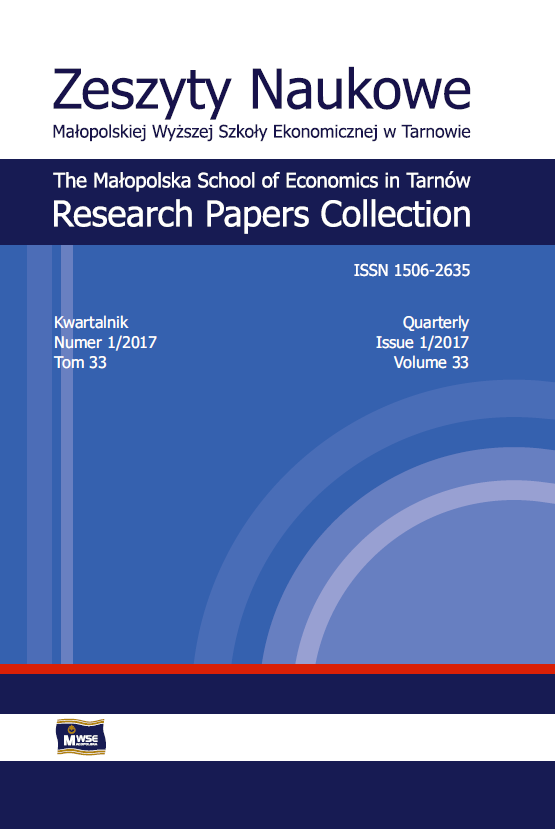Abstract
The article characterises the issue of a bank tax, created by economists. It is also focused on a new tax which was introduced in Poland from 1 February 2016 and charges some financial institutions. The paper also presents a brief analysis of empirical data, which characterized the new tax. In particular, this paper presents the volume of state budget revenues from the new tax for the period from March to May 2016 and the results of a survey carried among taxpayers paying this tax. The tax introduced for Polish taxpayers was a new obligation which had to be fulfilled in particular by banks and by insurers. Taxpayers are required to submit their tax returns to the appropriate tax office head, and to calculate and pay a tax for monthly billing periods until the 25th of the month following the month the tax concerns. The tax is 0.0366% of the monthly tax base, which is most often referred to as the surplus of the value of the taxpayer’s assets, resulting from the statement of turnover and balance established on the last day of the month: 4 billion, 2 billion, 200 million PLN—depends on the type of a taxpayer.
References
Brunnermeier, M.K. (2009). Deciphering the Liquidity and Credit Crunch 2007–2008. Journal of Economic Perspectives, 23(1), 77–100.
View in Google Scholar
Diamond, D.W., Rajan, R.G. (2009). The Credit Crisis: Conjectures about Causes and Remedies. American Economic Review, 99(2), 606–610.
View in Google Scholar
EBC. (2016). Opinia Europejskiego Banku Centralnego z dnia 12 stycznia 2016 r. o podatku od niektórych instytucji finansowych (CON/2016/1) [online, dostęp: 2016-07-14]. Dostępny w Internecie: https://www. ecb.europa.eu/ecb/legal/pdf/pl_con_2016_1_f_sign.pdf.
View in Google Scholar
Kil, K., Ślusarczyk, R. (2014). Podatek bankowy w krajach Unii Europejskiej – ocena implementacji. Prace Naukowe Uniwersytetu we Wrocławiu, 348, 124–133.
View in Google Scholar
KNF. (2016). Syntetyczna informacja nt. wpływu podatku od niektórych instytucji finansowych na sytuację banków komercyjnych [online, dostęp: 2016-07-14]. Warszawa: Komisja Nadzoru Finansowego. Dostępny w Internecie: https://www.knf.gov.pl/Images/info_nt_wplywu_podatku_od_niektorych_instytucji_ finansowych_na_syt_bankow_tcm75-47509.pdf.
View in Google Scholar
Siudek, T. (2011). Podatek bankowy – konsekwencje dla sektora bankowego w Polsce. Zeszyty Naukowe Szkoły Głównej Gospodarstwa Wiejskiego. Ekonomika i Organizacja Gospodarki Żywnościowej, 92, 63–76.
View in Google Scholar
Strona internetowa Ministerstwa Finansów: www.mf.gov.pl.
View in Google Scholar
Strona internetowa Narodowego Banku Polskiego: www.nbp.pl [dostęp: 2016-07-12]. Ustawa z dnia 15 stycznia 2016 r. o podatku od niektórych instytucji finansowych. Dz.U. z 2016 r., poz. 68.
View in Google Scholar
© Copyright by Małopolska School of Economics in Tarnów. The articles are available under the Creative Commons Attribution NonCommercial-NoDerivatives 4.0 International License


